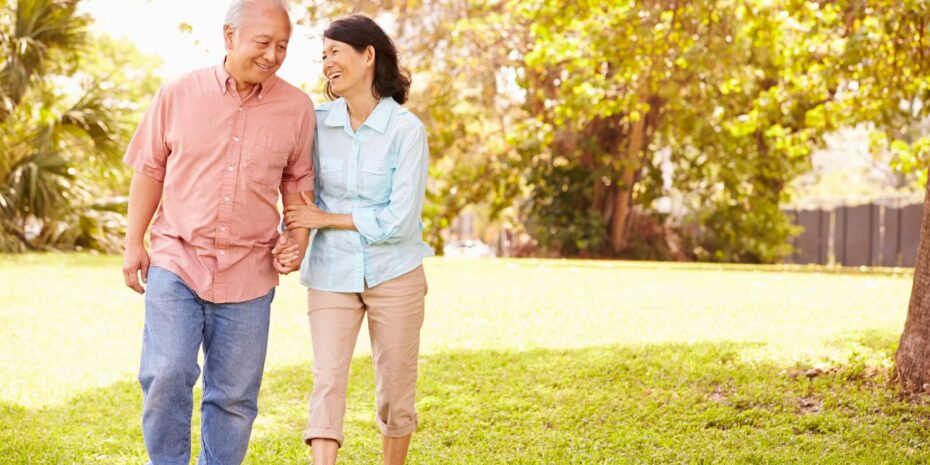
The ability to walk one kilometre can help predict fracture risk in older adults, according to new research using 45 and Up Study data.
Research from the Garvan Institute of Medical Research, published in JAMA Network Open, found that people who reported greater difficulty walking were more likely to experience a fracture over a five-year period.
Women who said they were severely limited in walking one kilometre had a 60% higher fracture risk than women with no reported limitation. For men, the increased risk was over 100%.
“We’ve discovered that trouble walking even short distances appears closely tied to higher fracture risk over the following five years,” says senior author of the study, Professor Jacqueline Center, Head of Garvan’s Clinical Studies and Epidemiology Lab.
The findings suggest a straightforward and cost-effective way for clinicians to identify those in need of further bone health screening. “Just a few simple questions about how far someone can walk could give doctors an early warning sign to check bone health,” says Prof Center.
Researchers analysed data from more than 230,000 adults from the 45 and Up Study. Participants – who are all aged 45 and older – were asked if health issues limited their ability to walk one kilometre, 500m and 100m, with answer options of ‘not at all,’ ‘a little,’ or ‘a lot’. The group was then followed for five years, using linked data to hospitalisations and visits to the emergency department to track fracture outcomes.
One in five participants reported some walking limitation at the beginning of the time period. 11,400 people went on to have a fracture, with 60% of fractures connected to walking limitation.
Walking limitation may have many causes beyond weak bones, but this strong link to fractures is important, say the researchers.
“Fracture risk assessment generally relies on a bone density test, which many people have not had when seeing their doctor,” says Prof Center. “Asking about walking ability takes just seconds and could be a free, non-invasive way to tell if someone needs their bones checked.”
Fractures in older adults is closely tied to osteoporosis, which is estimated to affect 1.2 million Australians. A further 6 million Australian are estimated to have low bone density. Osteoporosis medications and lifestyle changes can improve bone strength and avoid fractures.
“We hope these findings will encourage clinicians to consider walking ability as a red flag for possible bone health issues,” says first author of the study Dr Dana Bliuc, Senior Research Officer at Garvan. “For patients, if you can’t walk a full kilometre comfortably, it may be wise to ask your doctor about getting your bones checked.”
This paper is the latest in a series of research papers on osteoporosis, using 45 and Up Study data, undertaken by the Garvan Institute of Medical Research. Previous research has investigated health outcomes connected to osteoporosis medications, as well as the screening and treatment of osteoporosis in high-risk fracture patients.
The 45 and Up Study is one of the largest ongoing studies into health and wellbeing in the world, with more than 250,000 Australian participants aged 45 and older followed since 2005. New data from the latest major survey will be available to researchers in 2024.
This research was supported by a National Health & Medical Research Council grant (APP 1108886 to JRC), a Medical Research Future Fund (1137462 to JRC), and Mrs Janice Gibson and Ernest Heine Family Foundation.





